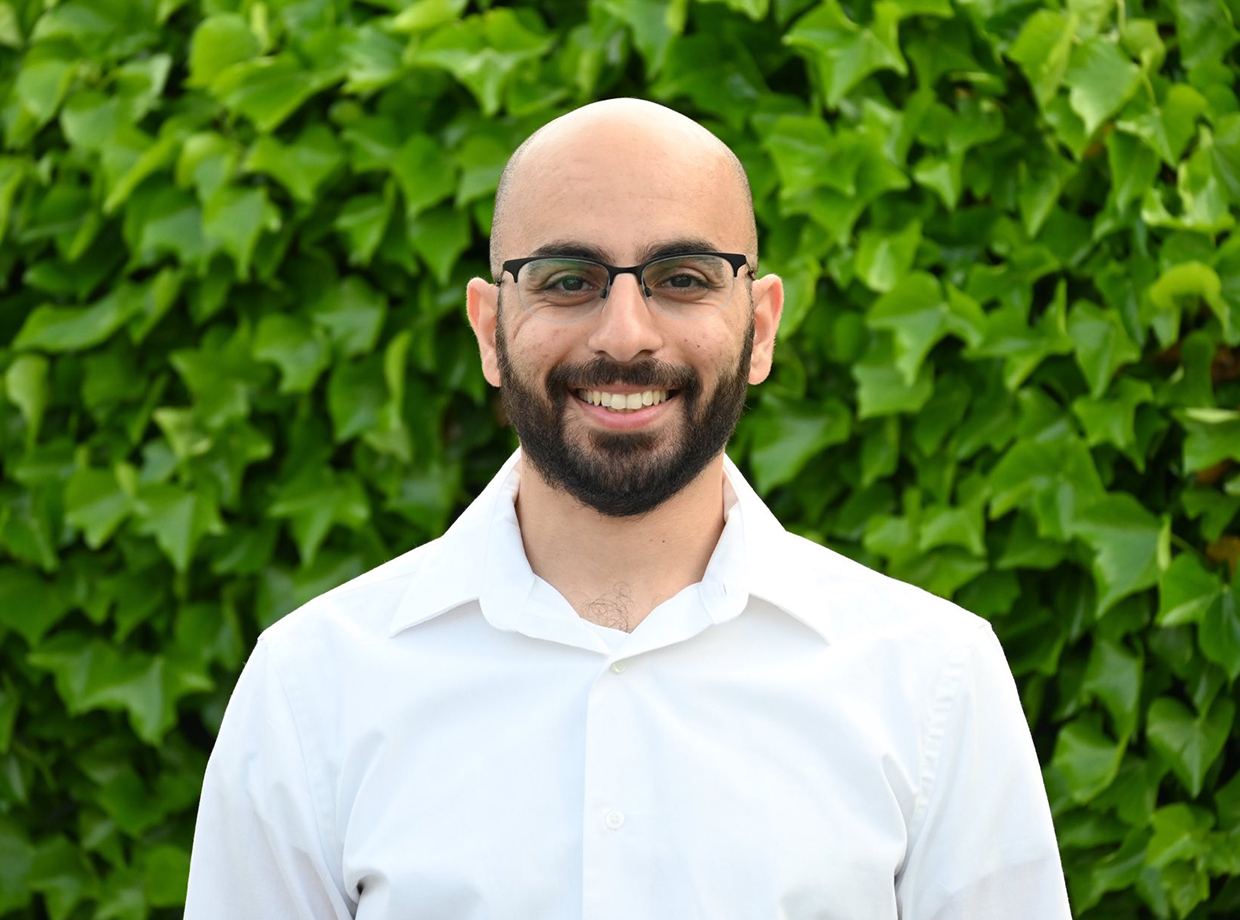
Electrodes implanted on the surface of a brain. Yazdan Lab. © 2022 IEEE

Karam Khateeb, a PhD student in Associate Professor Azadeh Yazdan-Shahmorad’s lab, has earned recognition for his research on neural stimulation through an NIH D-SPAN F99/K00 grant. The research aims to improve the lives of people suffering from neurological disorders. This prestigious grant will provide Karam with two years of funding for graduate school and four years for post-doctoral research.
Our brains are like complex computers, with trillions of connections (synapses) between nerve cells (neurons). These connections are responsible for our memories and behaviors. However, neurological disorders like schizophrenia, epilepsy and stroke can disrupt these connections, leading to cognitive and behavioral problems.
Karam’s research revolves around using neural stimulation as a potential solution to restore lost brain function caused by these disorders. This approach aims to harness the brain’s plasticity – the ability to adapt and change – to improve connectivity between neurons. His work primarily considers two important mechanisms that shape these changes:
- Hebbian Plasticity: This mechanism strengthens or weakens connections between neurons based on their activity. For example, if the neurons fire together, their connections get stronger (long-term potentiation, LTP).
- Homeostatic Plasticity: This mechanism maintains consistent neuron activity levels by adjusting synaptic strengths, inhibitory levels, and the threshold for LTP induction based on previous activity.
Karam suggests that both Hebbian and homeostatic plasticity mechanisms are key to improving neural connectivity through stimulation. He believes that the interplay between these mechanisms can be engineered to strengthen connections between different areas of the brain.
In his first aim, Karam will investigate how reducing neuron activity affects Hebbian-informed stimulation-induced connectivity changes, both in healthy and diseased states. In the diseased state, he will assess whether this approach can aid functional recovery after a targeted brain injury.
For his second aim, Karam plans to explore ways to suppress the homeostatic plasticity mechanisms that may interfere with Hebbian-informed stimulation-induced changes.
By incorporating homeostatic plasticity mechanisms into Hebbian-based stimulation protocols, Karam’s study could potentially revolutionize the effectiveness of future stimulation-based therapies for neurological disorders. This could have a significant impact on people living with these conditions, offering hope for better treatments and outcomes.

